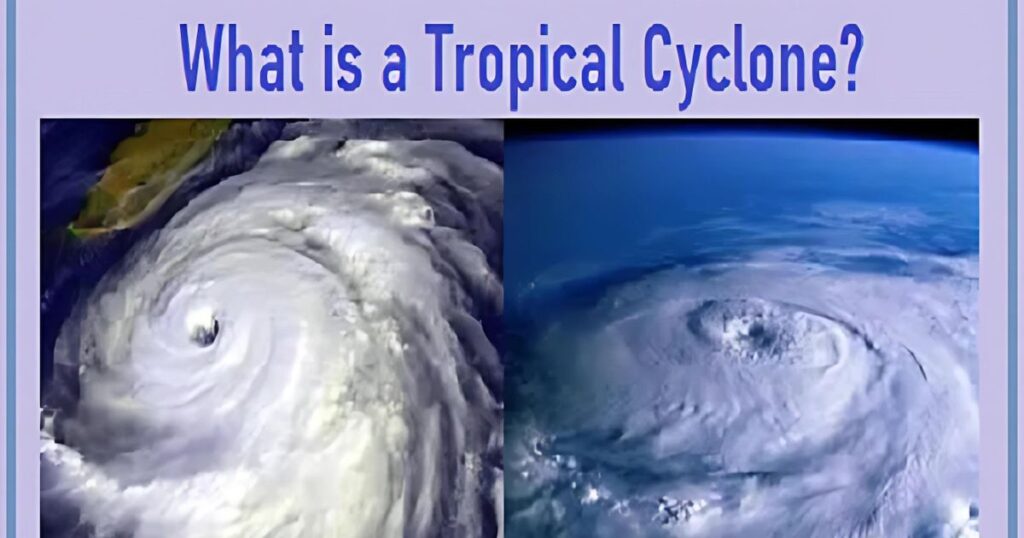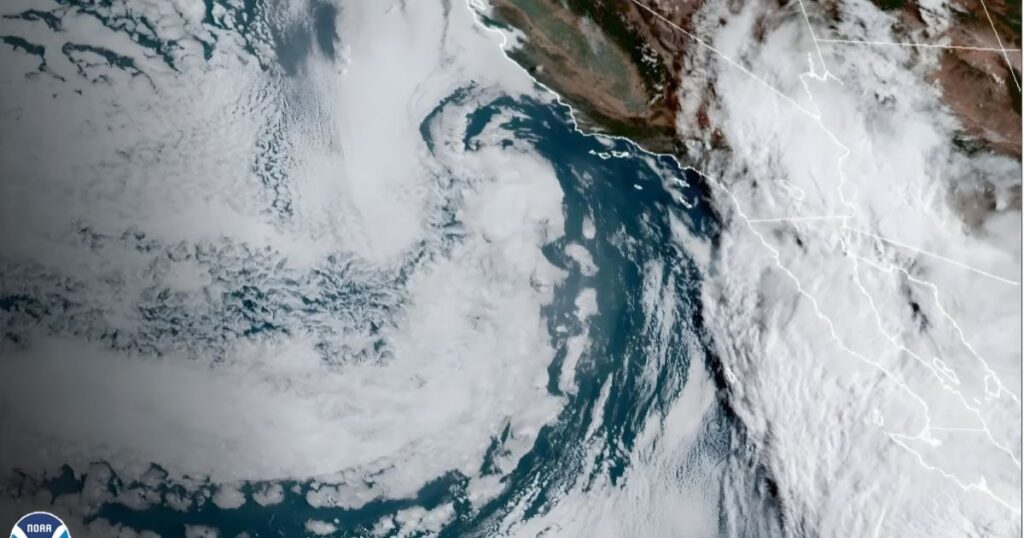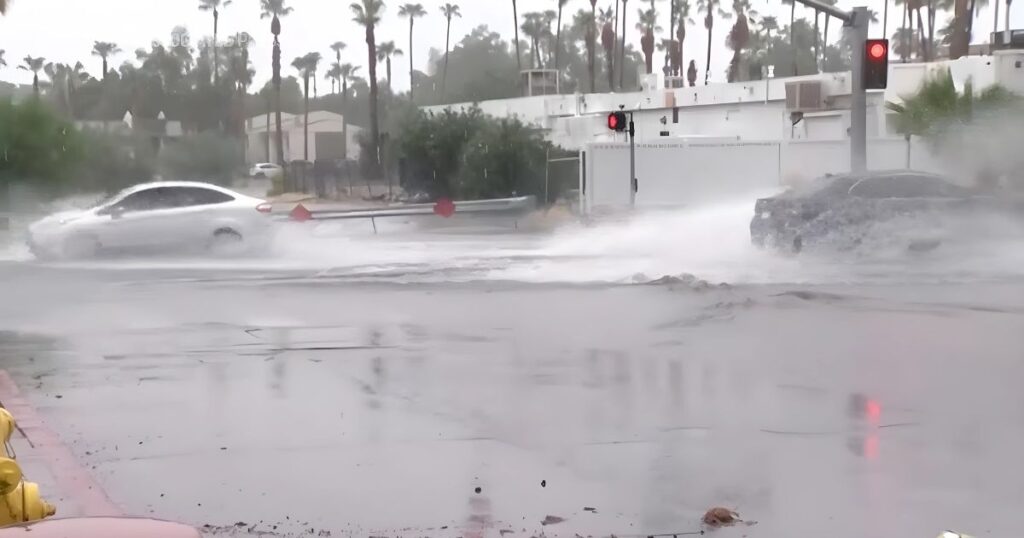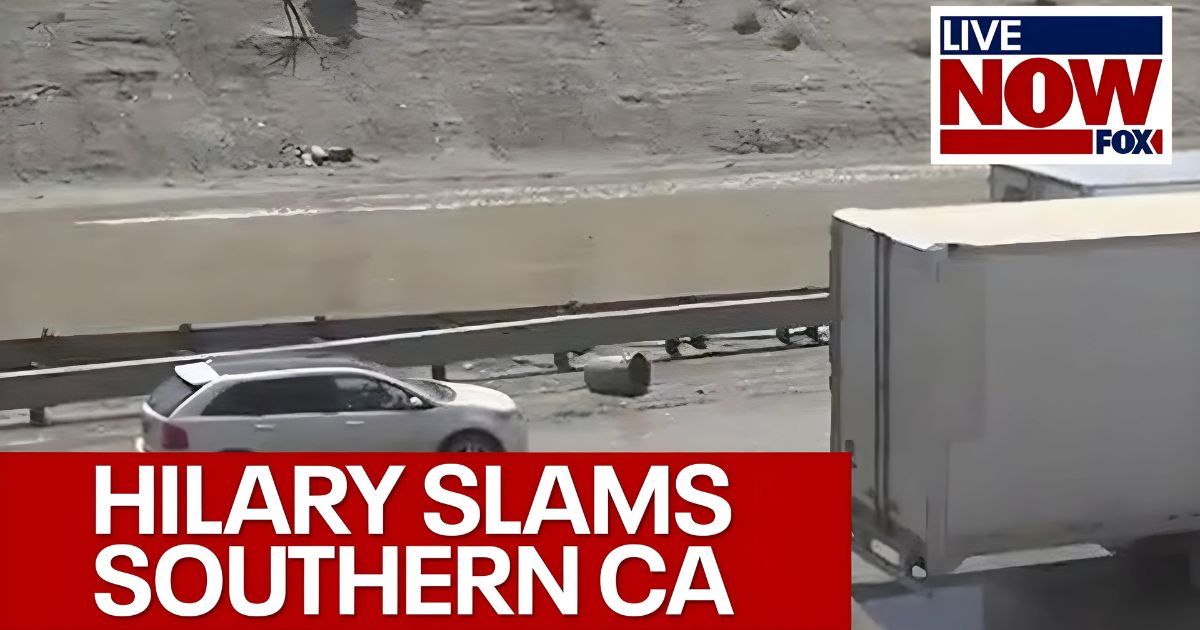Introduction
The 2023 Eastern Pacific hurricane season brought with it Post Tropical Cyclone Hilary, a storm that threatened to make history by bringing tropical storm conditions to Southern California for the first time since 1997. While Hilary’s landfall ultimately resulted in less dramatic impacts than initially feared, its journey and the unique circumstances surrounding it remain a noteworthy chapter in Pacific weather history.
Read More: Digital News Planet
Post Tropical Cyclone Hilary: Formation and Track
Hilary’s origins can be traced back to a tropical wave that emerged off the coast of Central America in early August 2023. The wave developed favorable conditions and strengthened into Tropical Storm Hilary on August 13th. As it churned westward, Hilary intensified, reaching Category 1 hurricane status on August 17th.

The storm’s projected track became a major point of concern. Initial forecasts indicated a potential collision course with the Baja California peninsula, followed by a turn northward towards the California coast. This trajectory raised the possibility of Post Tropical Cyclone Hilary making landfall in Southern California, a highly unusual event.
Preparations for a Historic Landfall
The threat of a tropical storm impacting California sent shockwaves through the region. Memories of past devastating floods, particularly those associated with El Niño events, were fresh in people’s minds. Local authorities across Southern California issued evacuation orders for low-lying areas and areas prone to mudslides. Sandbags were distributed, and residents were urged to stock up on emergency supplies.

The National Hurricane Center (NHC) issued its first-ever tropical storm warning for Southern California, stretching from the Mexican border to just north of Los Angeles. This unprecedented move underscored the seriousness of the situation and the potential dangers posed by Post Tropical Cyclone Hilary.
Transformation Over Land
As Post Tropical Cyclone Hilary approached Baja California, its characteristics began to change. The mountainous terrain disrupted the storm’s circulation, weakening its intensity and disrupting its convection, the process that fuels a hurricane. By the time Hilary made landfall on August 20th, it had transitioned into a post-tropical cyclone, a non-tropical low-pressure system with remnants of its former tropical structure.

Downgraded Impacts
The transformation into a post tropical cyclone significantly reduced the severity of Hilary’s impact on California. While the storm brought gusty winds and periods of heavy rain, the anticipated “catastrophic and life-threatening flooding” thankfully did not materialize. Areas that braced for a direct hit received only moderate rainfall, and the feared storm surge never materialized.
Reasons for Downgraded Impacts
Several factors contributed to the downgraded impacts of Post Tropical Cyclone Hilary.
- Land Interaction: As Hilary moved over Baja California’s mountainous terrain, its circulation became disrupted, hindering its ability to maintain its strength.
- Cooler Waters: The storm encountered cooler ocean temperatures off the California coast, further weakening its convection and hindering its ability to intensify.
- Shear Winds: Increased wind shear, the change in wind speed or direction with height, can disrupt a storm’s structure and prevent it from intensifying.
Hilary’s Absorption and Legacy
Post Tropical Cyclone Hilary continued to weaken as it moved inland over California. Early on August 21st, it was absorbed by a separate non-tropical low-pressure system developing near the southern California coast. This event added a layer of complexity to the storm’s story, with some operational forecasts suggesting Hilary technically reached California as a tropical storm.
While the lack of a direct tropical storm landfall meant California avoided the worst-case scenario, Post Tropical Cyclone Hilary served as a wake-up call. The storm highlighted the vulnerability of the region to extreme weather events, even those not traditionally associated with the area.
Post-Hilary Learnings
The experience with Post Tropical Cyclone Hilary provided valuable lessons for California and the broader scientific community.
- Improved Preparedness: The storm emphasized the importance of preparedness for all types of severe weather events, not just those commonly experienced in a particular region.
- Tropical Cyclone Threat: The event highlighted the possibility of tropical cyclones impacting California, prompting calls for improved forecasting models and communication strategies for such scenarios.
- Post-Tropical Cyclones: The unique behavior of Post Tropical Cyclone Hilary underscored the need for further research on how these types of storms behave and their potential impacts.
FAQs:
1: Will Hilary hit Los Angeles?
Post Tropical Cyclone Hilary threatened Los Angeles in August 2023, but fortunately, it weakened significantly before reaching the city. The storm brought rain and wind, but not the catastrophic flooding that was initially feared.
2: What is a post tropical cyclone?
A post tropical cyclone is a storm system that originated as a tropical cyclone but has lost its core warm characteristics. These storms can still retain some wind and rain, but they are generally weaker and less organized than their tropical counterparts.
3: Has Hurricane Hilary hit San Diego?
No, Post Tropical Cyclone Hilary did not directly hit San Diego. The storm made landfall in Baja California and weakened considerably before reaching the California coast. San Diego experienced some rain and wind associated with the storm, but no significant damage.
4: Will Hurricane Hilary hit Utah?
Hurricane Hilary did not and could not hit Utah. Hurricanes require warm ocean water to maintain their strength, and Utah is a landlocked state.
5: Is Hurricane Utah a country?
No, Utah is a state in the western United States. There is no country named Hurricane Utah.
6: Why is Utah getting so much rain?
While Post Tropical Cyclone Hilary did bring some rain to parts of Utah, it wasn’t the sole cause of any recent heavy rainfall events. Utah’s weather patterns can be influenced by various factors, including Pacific Ocean conditions, jet stream patterns, and seasonal variations.
7: Is Utah getting hotter?
Climate change is causing average global temperatures to rise, and Utah is not immune to this trend. However, temperatures can fluctuate from year to year, so it’s important to look at long-term data to understand Utah’s specific warming trends.
8: Why is Utah so cold?
Utah’s high altitude and continental location contribute to its colder temperatures. Mountains tend to be cooler than surrounding lowlands, and Utah’s distance from large bodies of water like oceans allows temperatures to drop more significantly in winter.
9: Why is Utah so snowy?
The combination of cold temperatures and the “lake effect” from the Great Salt Lake contributes to Utah’s significant snowfall. Cold air masses pick up moisture from the lake, leading to heavy snowfall in the surrounding mountains.
10: Is Utah a good place to live?
Whether Utah is a good place to live depends on individual preferences. The state offers beautiful scenery, outdoor recreation opportunities, and a relatively low cost of living. However, winters can be harsh, and some areas experience air quality issues.
11: Does Utah have bad winters?
Utah winters can be quite cold and snowy, with temperatures often dropping below freezing and significant snowfall in the mountains. However, the severity of winters can vary from year to year.
12: Who owns the greatest snow on Earth?
There’s no single owner of the “greatest snow on Earth.” Different locations boast unique snow qualities due to factors like temperature, moisture content, and density. Utah is known for its “powder snow,” prized by skiers and snowboarders.
13: How much rain did California get from Hilary?
The amount of rain Post Tropical Cyclone Hilary brought to California varied depending on location. Some areas received several inches, while others saw little to no rainfall. The storm’s impacts were far less significant than initially predicted.
14: How much rain did Las Vegas get from Hurricane Hilary?
Las Vegas is located in Nevada, not California. Post Tropical Cyclone Hilary did not directly impact Las Vegas, though some areas in the surrounding region might have received light rain associated with the outer bands of the storm.
15: Has California ever had a hurricane?
California has not experienced a direct hit from a hurricane in recent history. However, the remnants of tropical storms can and do occasionally bring rain and wind to the state, as was the case with Post Tropical Cyclone Hilary.





